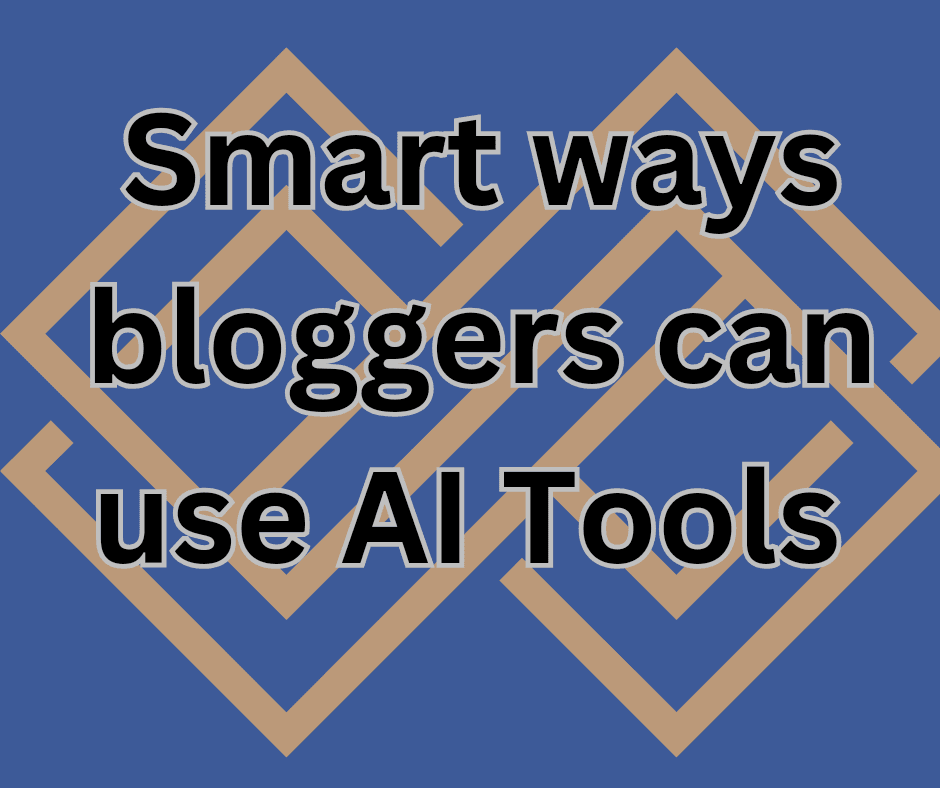AI for Blogging
Keeping your blog content fresh can feel like a never-ending task, but it’s more important than ever. Readers expect up-to-date, engaging posts that stay relevant as trends shift. This is where AI becomes a powerful tool for bloggers. From suggesting new topics to updating outdated information effortlessly, AI helps you stay ahead without burning out. Ready to keep your blog current with less effort? Let’s explore how AI can make it happen.
Leveraging AI for Idea Generation
Sometimes, the toughest part of blogging is coming up with fresh ideas. Staring at a blank screen can feel like trying to start a fire with wet wood. This is where AI tools come in to spark creativity and keep your blog fueled with great content ideas.
Using AI Tools for Brainstorming
If you’ve ever felt stuck while brainstorming, AI tools can be the creative partner you didn’t know you needed. These tools generate ideas based on keywords, audience interests, or even the latest industry data. Below are some of the standout options:
- Grammarly’s Brainstorming Tool: Known for its writing assistance, Grammarly also offers an AI-powered content idea generator for various needs.
- HubSpot Blog Ideas Generator: This tool provides SEO-friendly blog post topics tailored to your brand’s focus.
- Hootsuite Blog Ideas Generator: Perfect for social media-savvy bloggers, this tool suggests trending topics and ideas to boost engagement.
- Ideamap: It offers advanced features like topic detection and visualized idea mapping, making brainstorming more comprehensive.
- EdrawMind AI Brainstorm: Ideal for visual thinkers, this tool helps you create mind maps of potential blog topics.
- HyperWrite Brainstorming Tool: This AI tool creates tailored solutions and suggestions for your specific content needs.
These tools are more than time-savers; they’re accelerators for creativity. They analyze data and patterns while you stay focused on your blog goals.

Photo by Andrew Neel
Utilizing AI for Trend Analysis
Trends change fast, and keeping up is essential if you want to remain relevant. AI simplifies this process by scanning massive amounts of data to reveal what’s trending in your industry.
AI-powered tools like Google Trends, BuzzSumo, and SEMrush Topic Research are a blogger’s best friend. Here’s how they help:
- Real-time Insights: These tools identify what’s buzzing right now, so you can create timely and engaging content.
- Audience Behavior Analysis: AI uncovers what your target audience is searching for and interacting with.
- Competitor Monitoring: Tools like BuzzSumo also provide insights into what your competitors are writing about and how it resonates.
By using AI to analyze trends, you can build a content strategy that not only aligns with current interests but also sets you apart as a forward-thinking blogger. It’s less guesswork and more precision for your content plan.
When paired with creativity, AI transforms content planning from a chore into an opportunity to innovate constantly.
AI-Powered Content Curation
AI isn’t just about creating content—it’s also incredibly effective at curating it. Bloggers can use AI-powered tools to stay relevant by delivering up-to-date, audience-focused content while saving hours of manual research. These tools analyze data, streamline the curation process, and provide actionable insights that align with your goals. Whether you’re looking for fresh blog post ideas or crafting engaging social media campaigns, content curation tools powered by AI are here to help.

Photo by Shantanu Kumar
Automated Content Suggestions
Imagine knowing exactly what your readers want to see before they even ask for it. AI tools like Feedly AI, Curata, and Anders Pink analyze your audience’s preferences, past behavior, and trending topics to suggest the most relevant content. These tools don’t just suggest random ideas—they study patterns, identify gaps, and recommend posts that resonate with your target audience.
Here’s how automated content suggestions can transform your blogging:
- Keyword Targeting: AI scans keywords your audience searches, providing highly relevant blog topics.
- Personalization: Based on past audience engagement, AI can customize suggestions tailored specifically to their preferences.
- Efficiency: By automating the research phase, you can focus more on producing quality content rather than hunting for ideas.
This isn’t just about convenience—it’s about making smarter choices that align with your readers’ interests.
Social Media Content Strategy
Promoting your blog doesn’t have to be a guessing game. AI tools like Buffer, BuzzSumo, and Quuu streamline the process of creating social media content designed to drive traffic back to your blog. These tools analyze engagement metrics, audience location, and timeline patterns to suggest posts that will get shared and clicked.
By using AI in your social media strategy, here’s what you gain:
- Content Scheduling: AI sets optimal posting times based on when your followers are most active.
- Post Optimization: Whether it’s word choice or hashtags, AI refines your social media copy to maximize reach.
- Trend Analysis: AI flags trending hashtags and topics, allowing you to join conversations and gain visibility.
Social media feels less like a chore and more like an extension of your blog with AI managing the nuances. You’ll spend less time guessing which posts will work and more time engaging with your audience.
Enhancing Research with AI
In the world of blogging, research is everything. But digging through countless articles, whitepapers, and sources to back your claims is time-consuming. AI changes the game by offering smarter ways to gather insights and verify information. Bloggers, this is your chance to save time and up your credibility.
AI for Information Gathering

Photo by Google DeepMind
When you’re short on time but need reliable sources, AI tools step in to simplify the process. Think of AI as your personal research assistant. These tools scan massive amounts of data and condense it into concise, actionable insights.
Here are some top tools bloggers are using today:
- ChatGPT: Great for summaries or generating quick explanations on complex topics.
- Scholarcy: A go-to for summarizing research papers into digestible key points.
- Feedly AI: Tracks industry trends and delivers curated updates, saving you hours of manual searching.
- ChatPaper: Connects you to relevant academic papers, providing summaries and offering timely updates.
- SummarizeBot: Uses advanced natural language processing to provide clear summaries of lengthy articles or research papers.
These tools don’t just provide information; they prioritize relevance. Whether you’re tackling a new niche or expanding a well-trodden topic, AI ensures you’re equipped with facts your readers actually care about.
Fact-Checking with AI
Accuracy is key in blogging, especially when building trust with your audience. AI-powered fact-checking tools make it easier to ensure everything in your post checks out. Need to verify a stat, quote, or claim? AI cuts the time you’d otherwise spend digging into sources.
Some standout options include:
- LongShot AI: Fact-checks and cites content, giving you reliable details to increase your content’s credibility.
- Snopes AI Integration: Extends the platform’s reputation for uncovering misinformation straight into your fact-checking process.
- ClaimBuster: Identifies questionable claims in your text and verifies them against reliable sources.
- Grover AI: Detects misinformation and validates claims, ensuring your blog stays not only engaging but accurate.
By using these tools, you minimize errors and deliver polished, trustworthy content. Plus, with AI’s ability to process data quickly, you can confidently address trending topics in near real-time, staying ahead of competitors.
Every blogger has faced the dreaded “Is this true?” moment. AI helps take the guesswork out, ensuring you publish content readers can rely on.
Personalizing Content with AI Insights
AI is changing how bloggers connect with readers by making content feel more personal and engaging. At its core, AI uses data to create tailored experiences, ensuring every piece of content resonates with specific audience groups. Let’s explore how this works.
Understanding Audience Preferences
AI tools analyze reader behavior, preferences, and habits to help you better understand your audience. It’s not just about knowing basic demographics—it dives deeper into what your readers enjoy, avoid, or even expect. How does this work?
- Behavior Tracking: AI can assess which posts your audience lingers on, what they click, and how long they stay engaged. It identifies patterns that give a clear view of what content works best.
- Content Feedback: Tools like Google Analytics and Hotjar, powered by AI, provide heatmaps and other visuals to show exactly how users interact with your site.
- Interest Prediction: AI platforms like ChatGPT or Jasper can predict content topics your audience will want based on search trends and past feedback.
Imagine having a direct line to your readers’ preferences—AI essentially gives you that ability. It ensures your blog stays relevant, relatable, and on point.
Dynamic Content Creation

Photo by Shantanu Kumar
Dynamic content adapts based on who’s viewing it. AI-driven tools help create tailored articles, headers, and calls-to-action that shift as your readers’ needs change. This ensures maximum relevance for whoever is visiting your blog.
- Content Recommendation Engines: AI systems suggest related posts or additional resources that align with the reader’s past interactions.
- Adaptive Blog Layouts: With tools like Optimizely, you can create layouts that change depending on user actions—making content more interactive and engaging.
- Custom Text Adjustments: Platforms like Jasper allow you to refine tone and language automatically for different audience segments.
Think of dynamic content as having a conversation with your audience rather than just talking at them. It’s like tailoring a speech for a specific group rather than delivering a one-size-fits-all presentation.
By combining audience insights with adaptive tools, bloggers can use AI to not only meet readers’ expectations but exceed them. Personalizing content is no longer an option; it’s becoming the standard for success in blogging. AI is the engine powering this revolution by ensuring blogs stay fresh, relevant, and compelling.
Repurposing Content with AI
Every piece of content you create has untapped potential. By repurposing blog posts and more with AI, you can breathe new life into your existing work, reach broader audiences, and stay relevant.
Transforming Blog Posts into Other Formats

Photo by Tara Winstead
AI tools make it easy to turn written content into diverse, engaging formats. Here are a few ways you can transform your blog posts:
- Convert to Videos: AI-driven platforms like Lumen5 or Pictory let you turn text into video summaries. These tools match visuals, transitions, and music to your content, creating professional videos in minutes.
- Create Infographics: Tools like Visme or Canva AI take key points from your blog and turn them into stunning infographics, perfect for sharing on social media.
- Transform into Podcasts: Text-to-speech AI tools like Play.ht can narrate your blog posts, enabling you to reach the growing audience of podcast listeners.
- Slice into Social Media Posts: Platforms like Buffer AI or Repurpose.io break down long-form content into bite-sized posts for platforms like Instagram, Twitter, or LinkedIn.
By using AI, repurposing content becomes less of a chore and more of a streamlined process. A single blog can turn into an entire content ecosystem, allowing you to meet readers where they are with the format they prefer.
Updating Outdated Information
Keeping your content relevant is a must, but manually scouring posts for outdated stats or broken links is tedious. AI tools change the game by automating this process.
- Spot Outdated Data: AI tools like MarketMuse or Frase analyze your website’s content and flag old statistics, links, or references that need updating. They also suggest new, relevant sources.
- Content Suggestions: Tools like Outranking AI or Surfer SEO offer smart recommendations for refreshing content. They suggest new keywords, additional sections, or updated context to align with recent trends.
- Automated Editing: Platforms like Grammarly AI or Copy.ai suggest rephrased updates based on tone, clarity, and intent, keeping everything polished.
Imagine a system that acts as both an editor and trend tracker. AI ensures your blog content evolves with time, giving readers current, trustworthy information without the heavy lifting.
AI in SEO Strategy Improvement
Using AI in SEO isn’t just about saving time; it’s about working smarter. With its ability to analyze and optimize, AI transforms how bloggers approach SEO strategies. Whether you’re refining keywords or identifying gaps in your content, AI tools provide actionable insights that boost your content’s online visibility.
Keyword Optimization with AI Tools

Photo by RDNE Stock Project
AI makes keyword research faster, more accurate, and data-driven. Using AI tools, you can uncover highly targeted keywords that resonate with search intent, boosting your chances of ranking higher. Here are some powerhouse tools:
- SEMrush: Known for its extensive features, SEMrush helps discover keyword trends and optimize content for intent.
- RankIQ: Focused on low-competition, high-ROI keywords, making it ideal for niche blogs.
- MarketMuse: Analyzes your content’s context then recommends keywords to enhance relevance.
- Surfer SEO: Offers suggestions on keyword density, phrase placement, and more to refine your SEO strategy.
- NeuralText: Combines keyword research with AI copywriting features to ensure a natural, SEO-friendly flow.
These tools take the guesswork out of SEO. Instead of pouring over spreadsheets, let AI tools fine-tune your keyword strategy while you focus on delivering quality content.
Content Gap Analysis
AI doesn’t just help target new keywords—it identifies what your content is missing. A strong blog isn’t only about optimization but also about covering topics your audience craves. This is where content gap analysis comes into play.
AI tools compare your existing content with competitors or industry standards. They highlight gaps in topics you haven’t explored yet. Tools like these are essential:
- SEMrush Gap Analysis: Compares your site with competitors to find unserved content opportunities.
- SpyFu Kombat: Tracks keyword gaps by analyzing competitors’ rankings, helping you fill in the blanks.
- PrioNow Content Gap Analysis: Offers a free tool to align your site’s content with search intent and enhance user experience.
- Ahrefs Content Gap Tool: Delivers detailed reports on topics your competitors rank for but you don’t.
- RightBlogger Content Generator: Customizes content suggestions based on specific gaps between similar articles.
Think of these tools as a magnifying glass for your content. They reveal untapped topics and help you plan future posts that bring value to your readers and make you more competitive in your niche.
Using AI for SEO improvement keeps your blog current in a constantly shifting algorithm environment—ensuring readers discover your content when they need it most.
Conclusion
Blogging with AI isn’t just easier—it’s smarter. By generating fresh ideas, analyzing trends, and automating updates, AI keeps your content dynamic and engaging. These tools streamline research, enhance personalization, and even repurpose your best work into new formats.
Start exploring AI tools today and see how they transform your workflow. Which tool will you try first?


